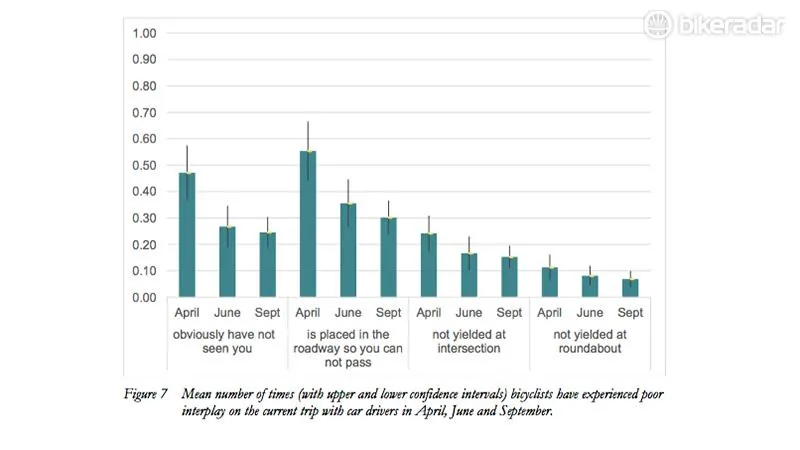The idea of 'safety in numbers' for cyclists has been questioned since it was first mooted two decades ago.
Now a three-year study of cycling safety in the city of Oslo, Norway, confirms it is not simply an attractive theory but is actually true – more cyclists equals safer cycling.
- What's the best bike for cycle commuting?
- Beginner's guide to riding in traffic
- 10 tips for safer city cycling
"Cycling advocates have long believed in safety in numbers but the important thing has been to understand what is really going on," Dr Aslak Fyhri, senior research psychologist and lead author of the 72-page report, tells BikeRadar.
Dr. Fyhri's team surveyed road users and analysed hours of traffic video from Oslo. They wanted to see if the number of dangerous events changed when the numbers of cyclists increased significantly between April and September.
Fewer near-misses and more bike awareness in the summer months

The results are convincing, he says. Car drivers say they become more aware of cyclists and, as the summer months pass, so do pedestrians. Near-misses fall from April to June and video analysis shows conflicts between cars and bicycles decrease between June and September.
Official safety figures, which distinguish between collisions and single bicycle-only accidents, reflect this safety improvement. "The data for Oslo show a pattern that can be interpreted as a 'Safety in Numbers' effect, with a higher share of collisions relative to single accidents in winter, where there are few cyclists," the study says. "When spring arrives, and cyclists turn to the streets, the number of accidents increase, but the number of collisions increases less than single accidents."
… but also an influx of inexperienced cyclists

Even though Fyhri's team has convincing evidence that the rise in cycling reduces the average risk of collision for each rider, their report says the benefit may not last very long and it could be at the expense of inexperienced cyclists.
"The results suggest that bicyclists experience a short-term Safety in Numbers effect through the season. Each individual cyclist experiences fewer occasions of being overlooked by cars and fewer safety critical situations (near-misses). Video observation data confirm this pattern," it says. "However, the effect seems to be countered by another mechanism taking place at the same time: the influx of inexperienced and risk-taking cyclists through the season."
So, late in the summer, car drivers and pedestrians are probably being "surprised" by cyclists who have barely been for a ride at all in the previous nine months.
Infrastructure issues also very important
Fyhri is keen to stress that although the study proves safety in numbers, nobody should adopt it as the only answer to making cycling safer. "You can't use it bluntly to improve safety," he tells BikeRadar. "There are infrastructure issues that are very important."
'Safety in Numbers - uncovering the mechanisms of interplay in urban transport' by Aslak Fyhri, Torkel Bjørnskau, Aliaksei Laureshyn, Hanne Beate Sundfør, Rikke Ingebrigtsen is published by the Institute of Transport Economics.



